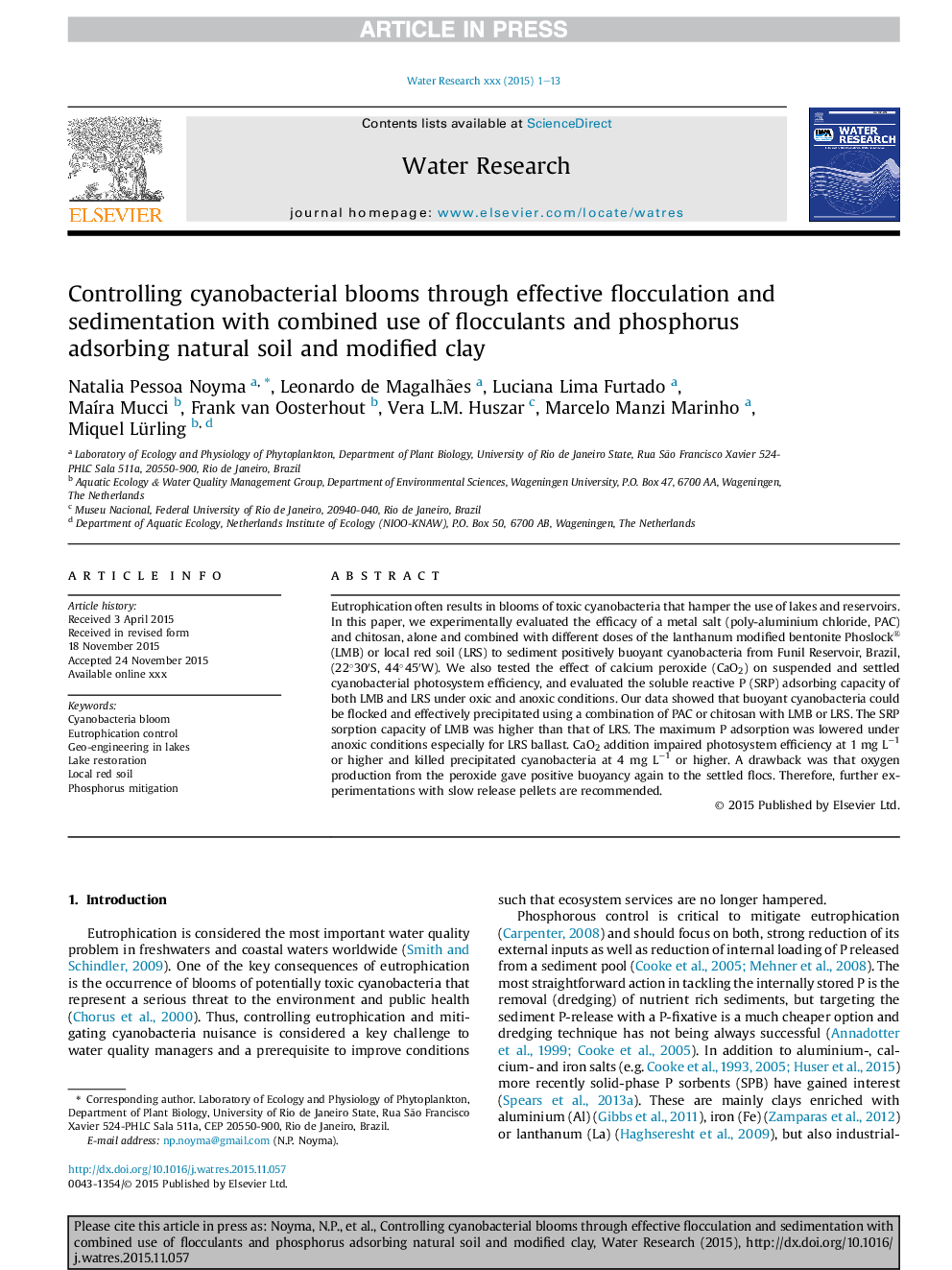| Article ID | Journal | Published Year | Pages | File Type |
|---|---|---|---|---|
| 6365082 | Water Research | 2016 | 13 Pages |
Abstract
Eutrophication often results in blooms of toxic cyanobacteria that hamper the use of lakes and reservoirs. In this paper, we experimentally evaluated the efficacy of a metal salt (poly-aluminium chloride, PAC) and chitosan, alone and combined with different doses of the lanthanum modified bentonite Phoslock® (LMB) or local red soil (LRS) to sediment positively buoyant cyanobacteria from Funil Reservoir, Brazil, (22°30â²S, 44°45â²W). We also tested the effect of calcium peroxide (CaO2) on suspended and settled cyanobacterial photosystem efficiency, and evaluated the soluble reactive P (SRP) adsorbing capacity of both LMB and LRS under oxic and anoxic conditions. Our data showed that buoyant cyanobacteria could be flocked and effectively precipitated using a combination of PAC or chitosan with LMB or LRS. The SRP sorption capacity of LMB was higher than that of LRS. The maximum P adsorption was lowered under anoxic conditions especially for LRS ballast. CaO2 addition impaired photosystem efficiency at 1 mg Lâ1 or higher and killed precipitated cyanobacteria at 4 mg Lâ1 or higher. A drawback was that oxygen production from the peroxide gave positive buoyancy again to the settled flocs. Therefore, further experimentations with slow release pellets are recommended.
Related Topics
Physical Sciences and Engineering
Earth and Planetary Sciences
Earth-Surface Processes
Authors
Natalia Pessoa Noyma, Leonardo de Magalhães, Luciana Lima Furtado, MaÃra Mucci, Frank van Oosterhout, Vera L.M. Huszar, Marcelo Manzi Marinho, Miquel Lürling,
